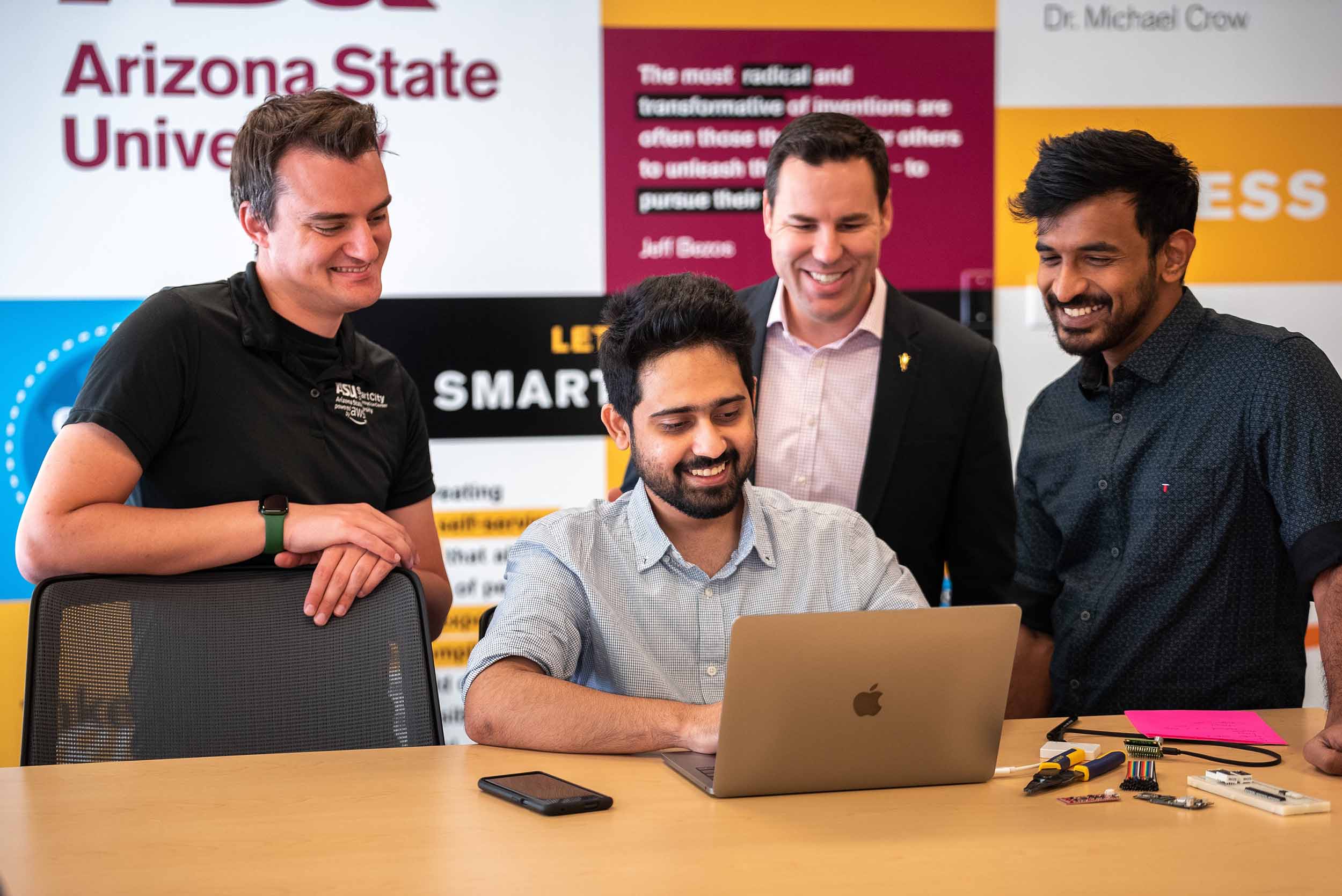From ASU to AWS, 3 students share their journey from college to career

Fulton Schools’ master’s graduates Risabh Raj, Pradeep Kumar Chenchala, and Krishna Teja Kalaparty are interns in the ASU Smart City Innovation Center, an ASU-Amazon partnership, and will continue as Software Development Engineers for Amazon Web Services after graduation…